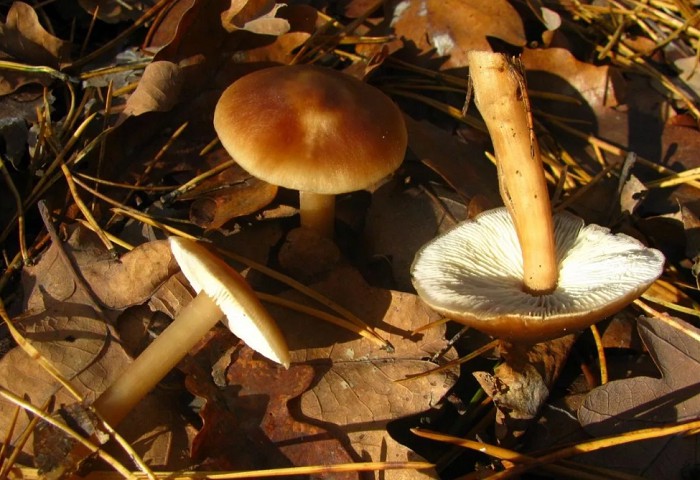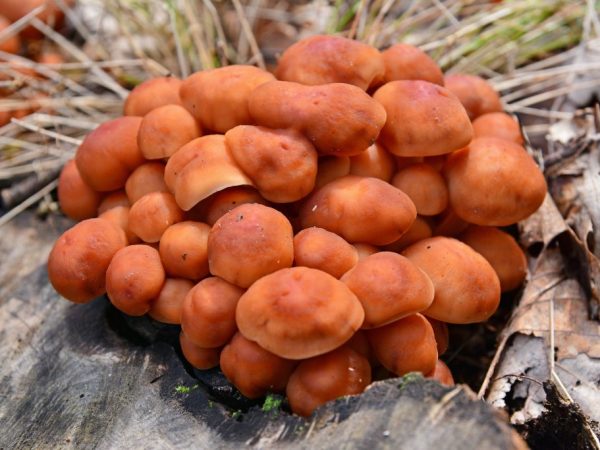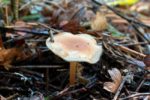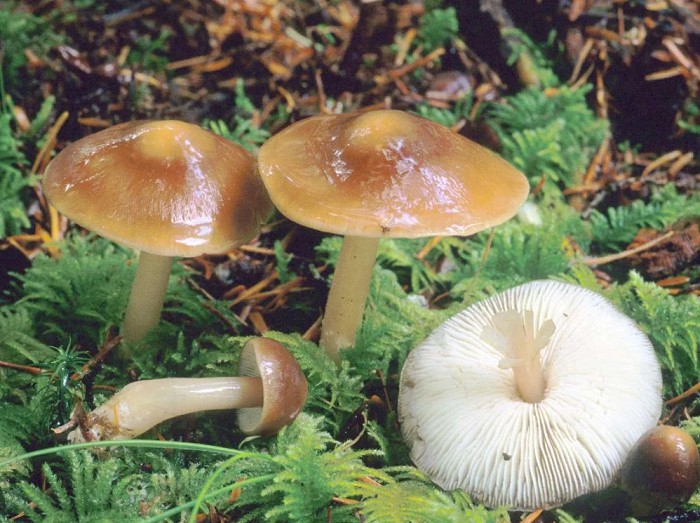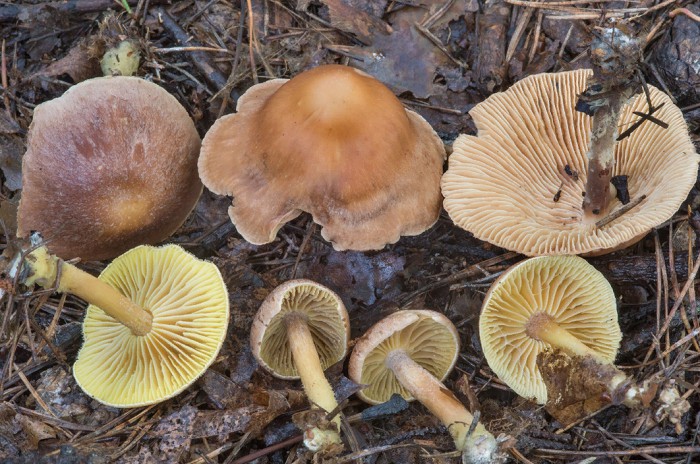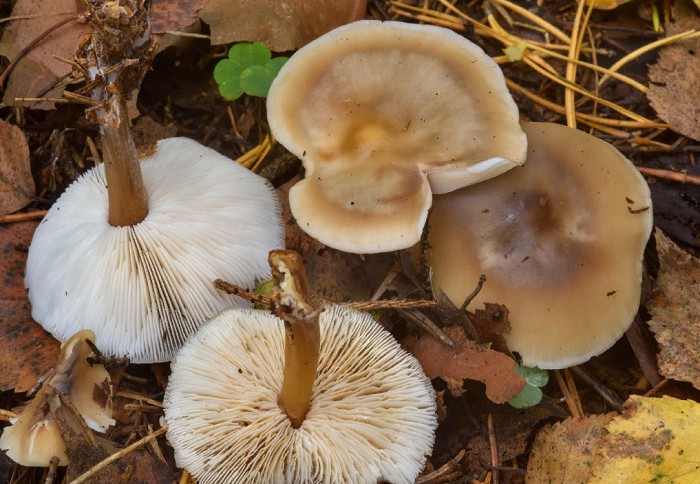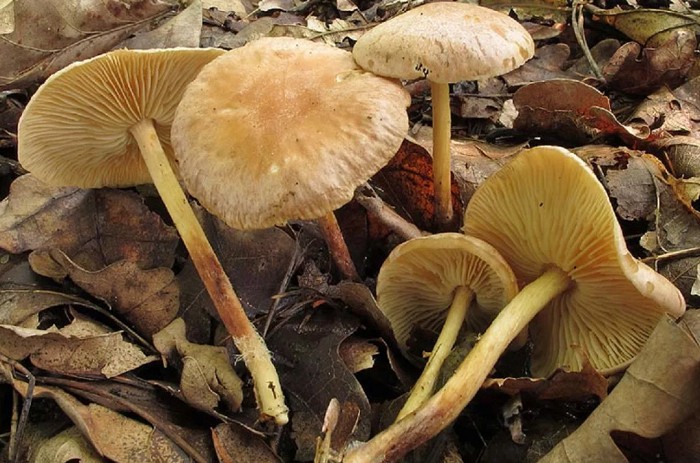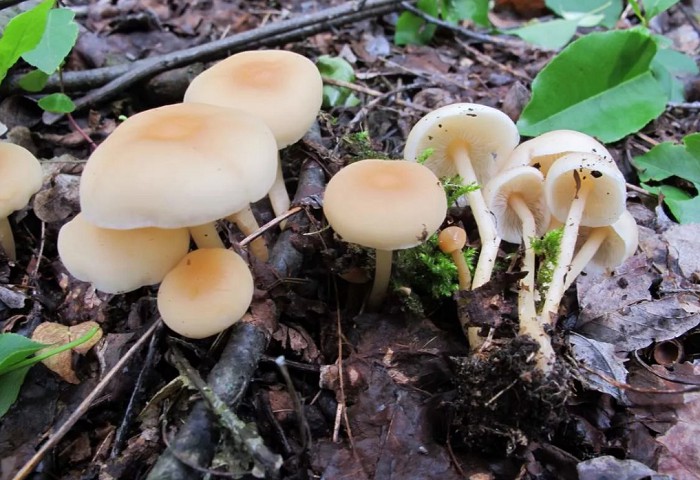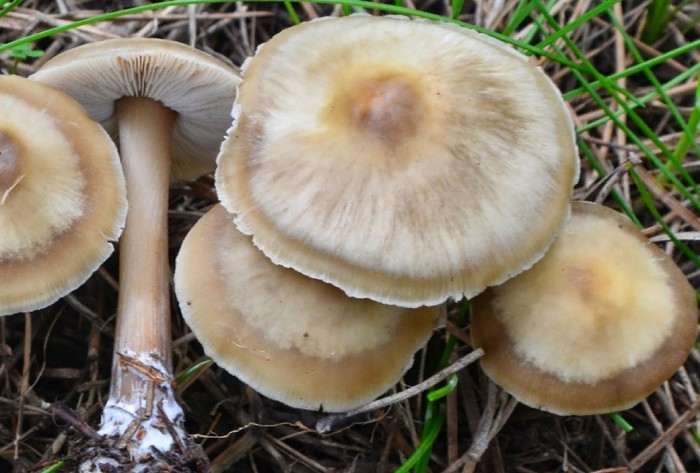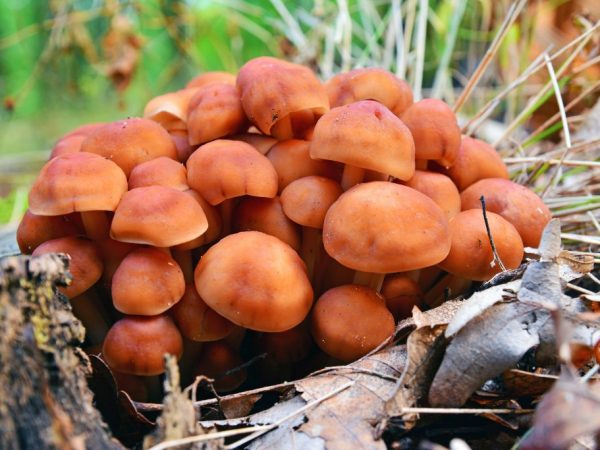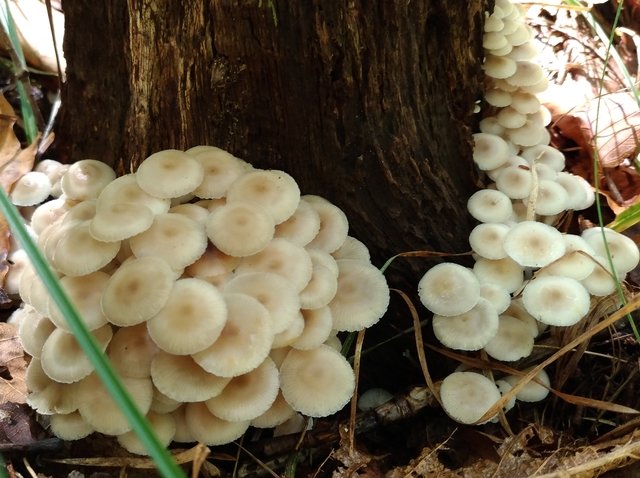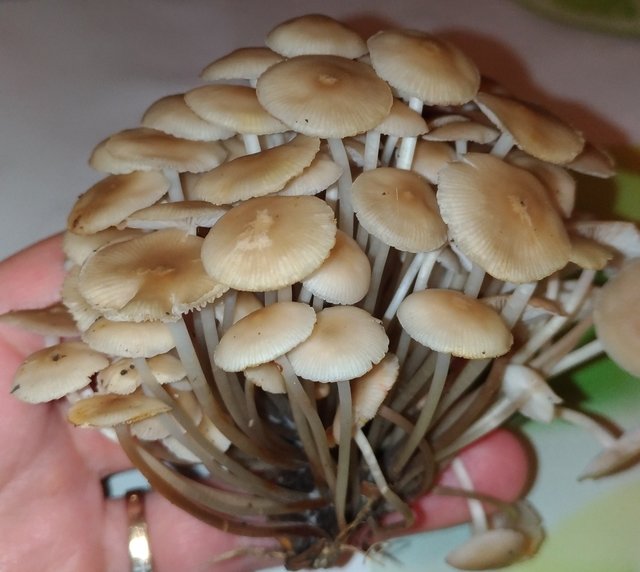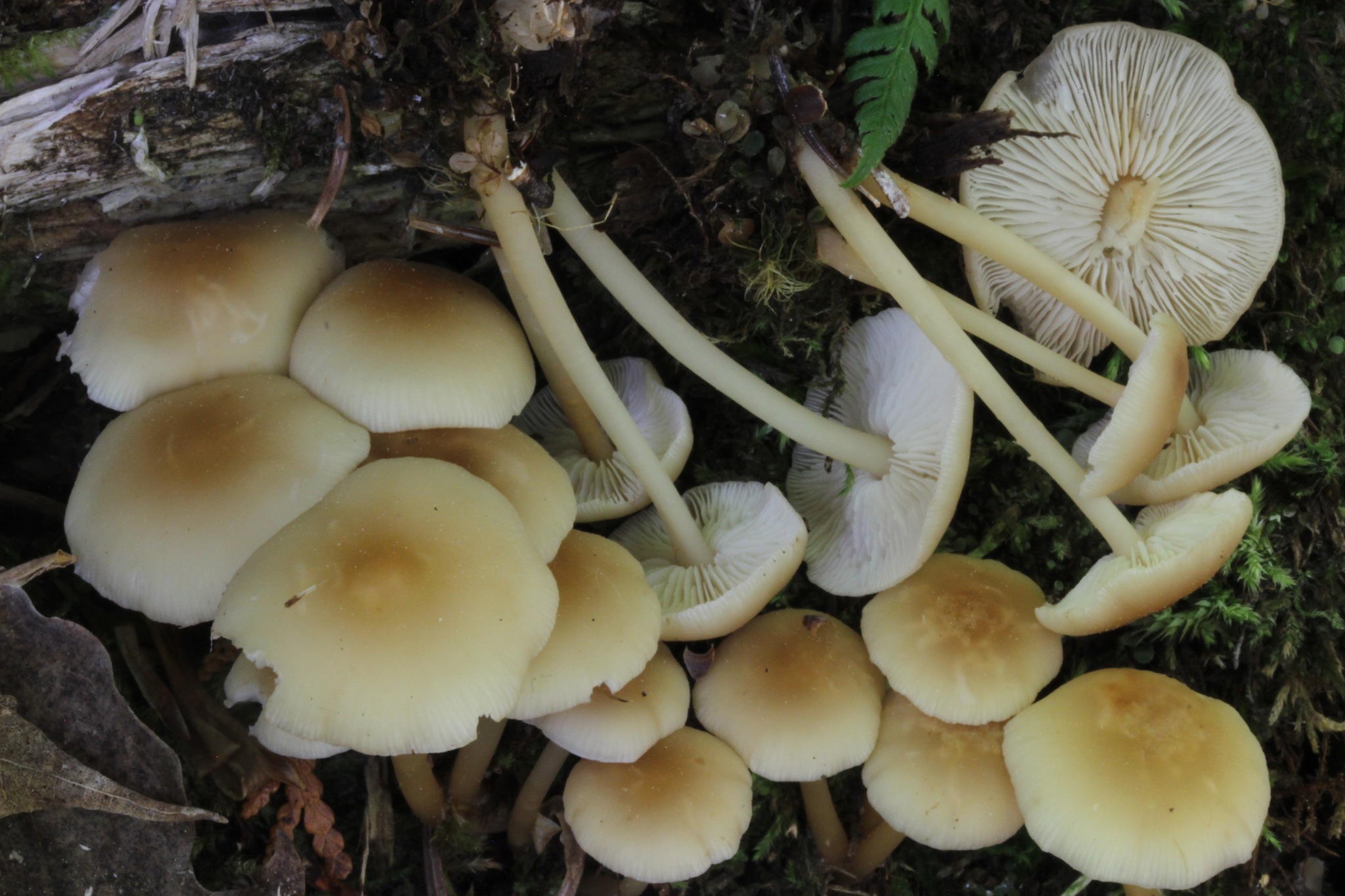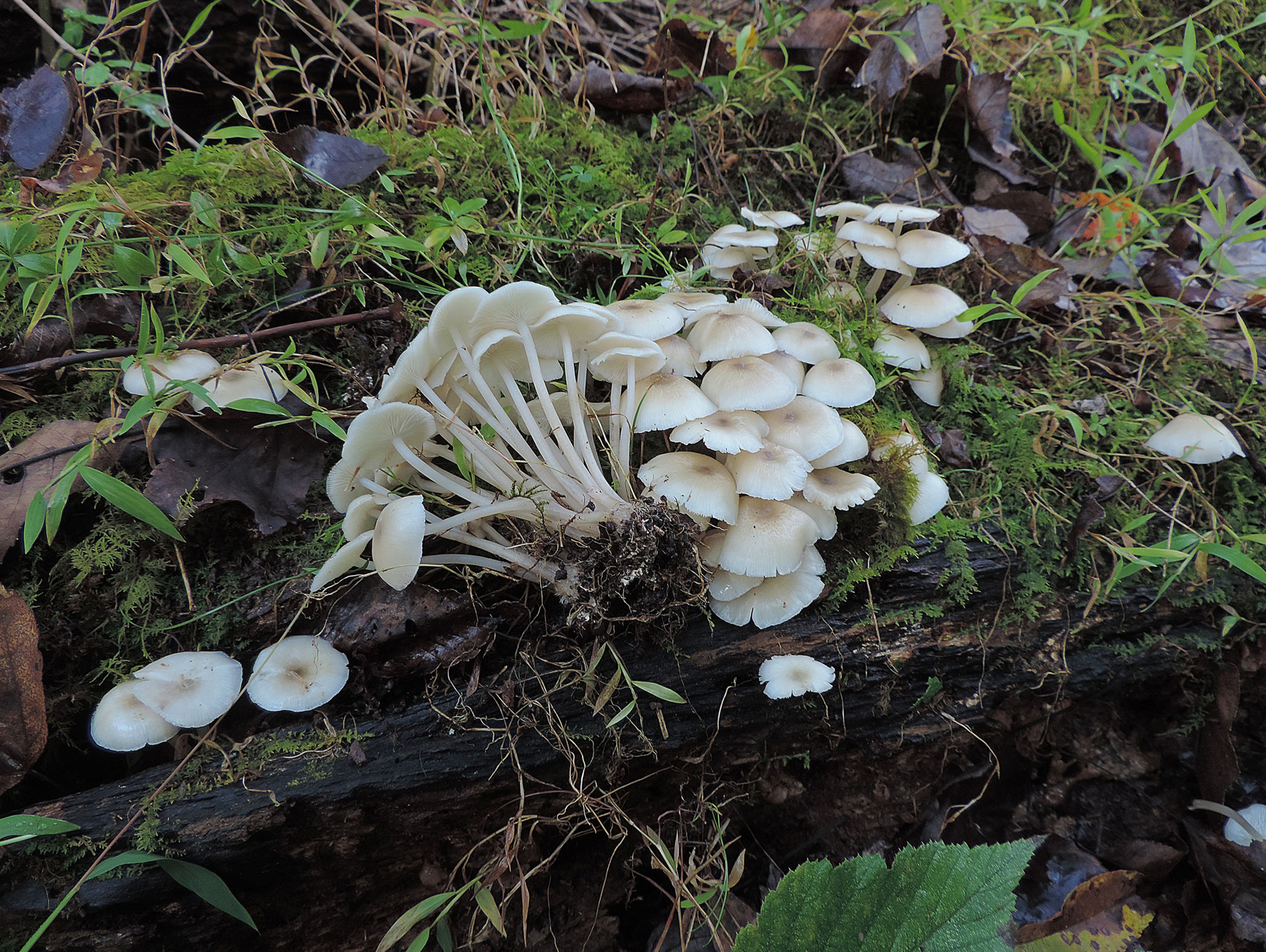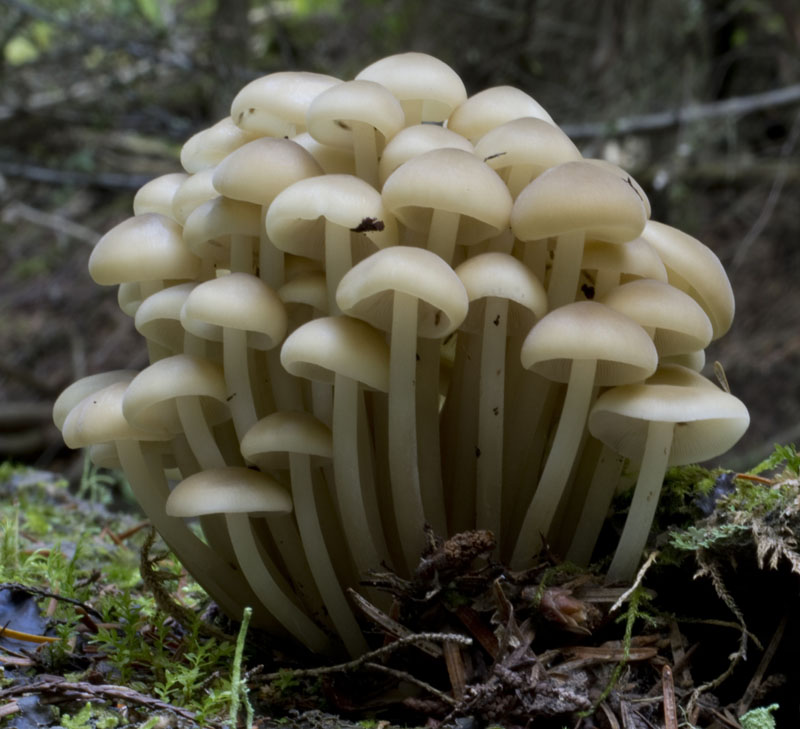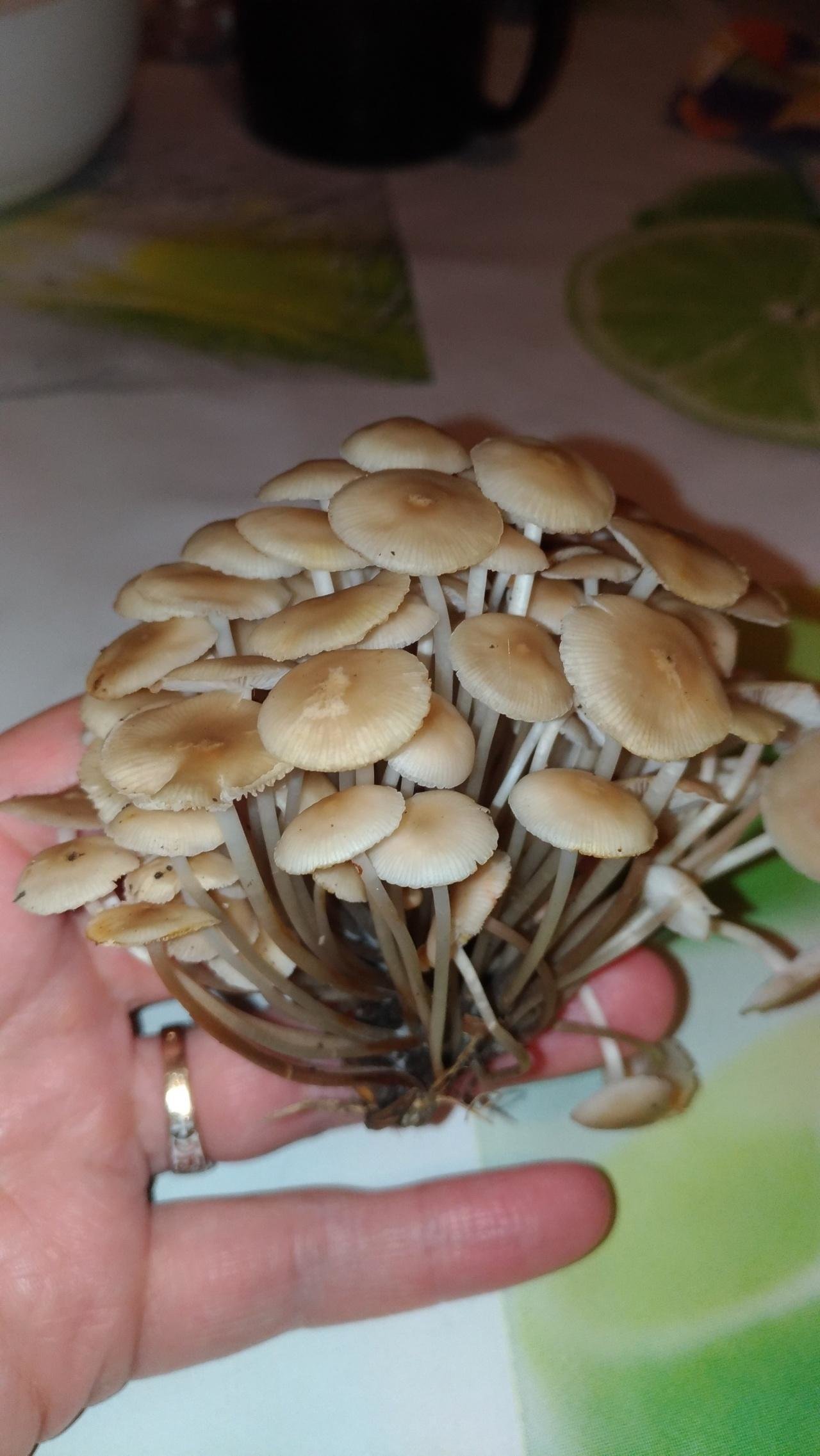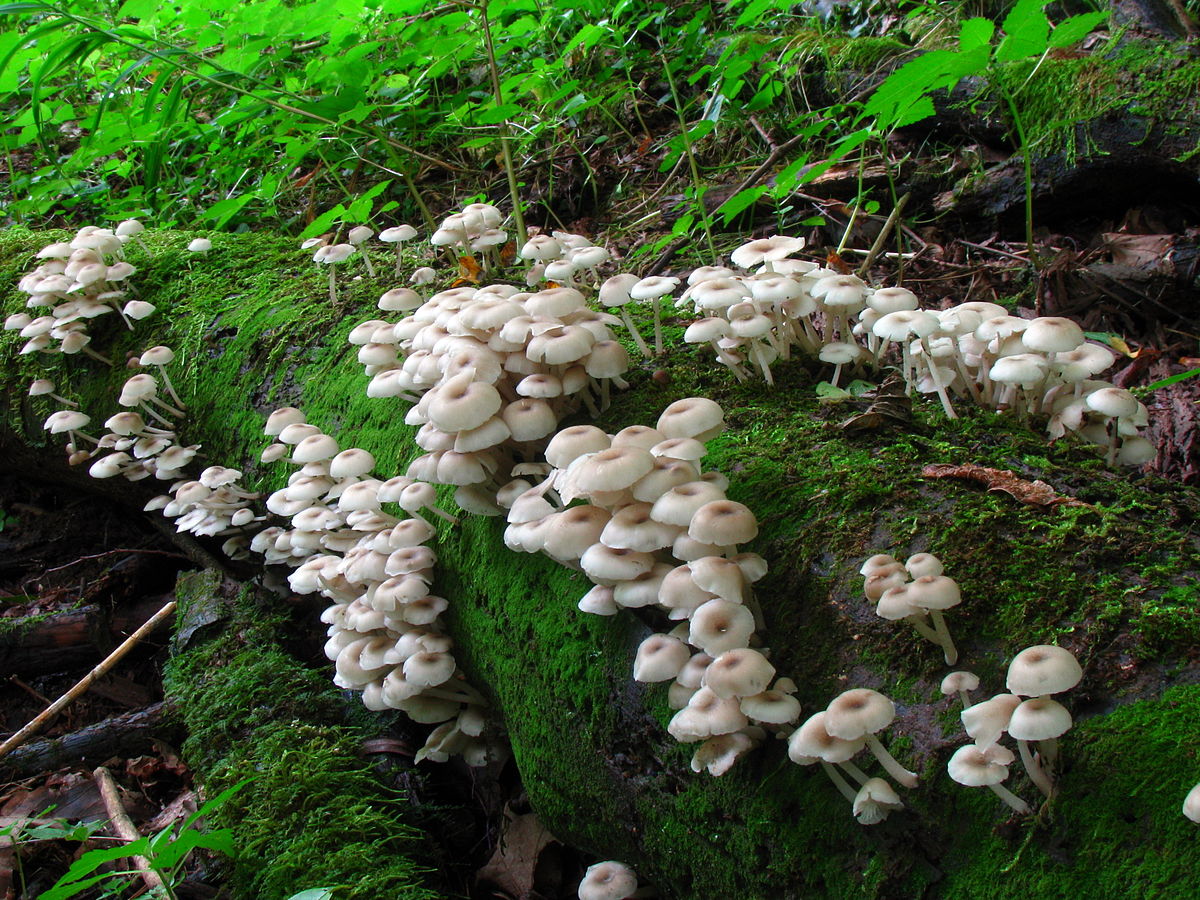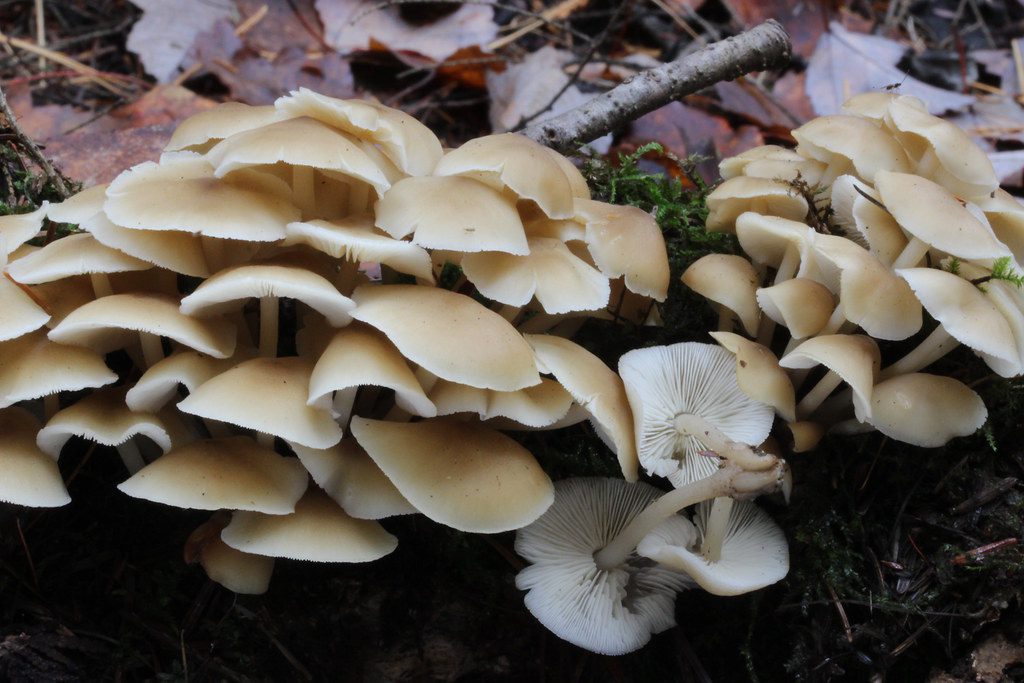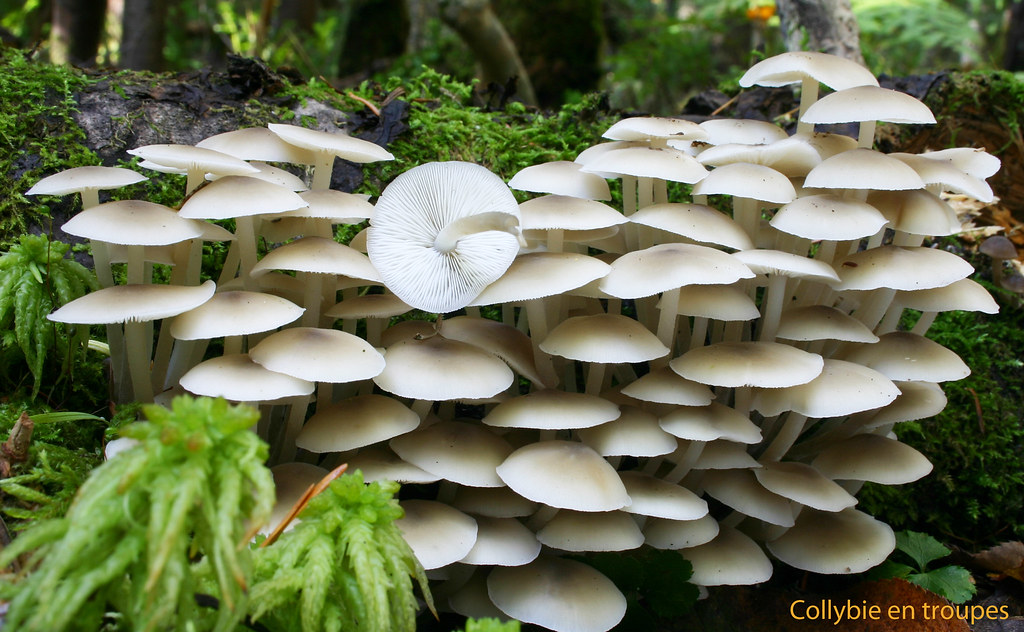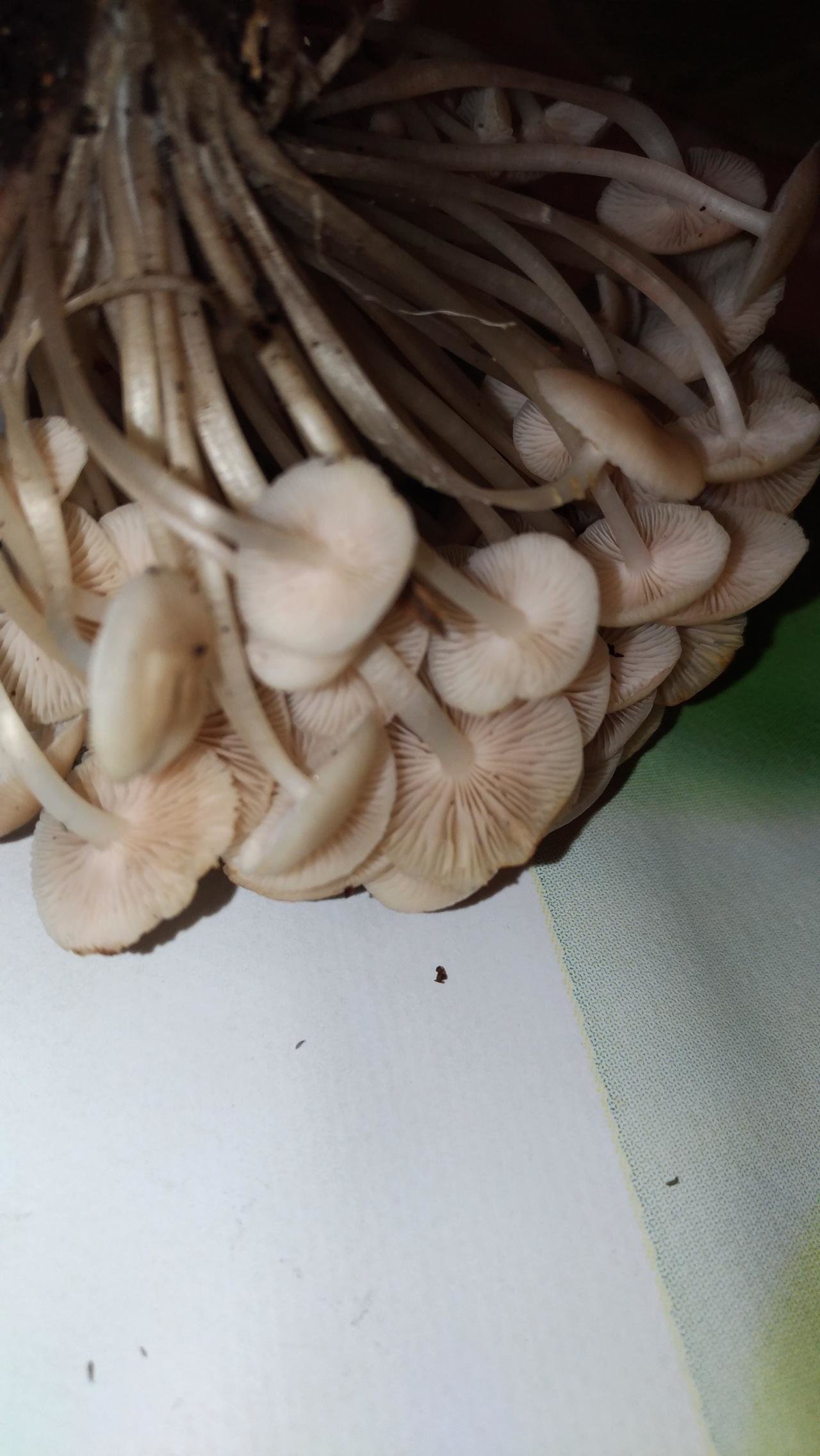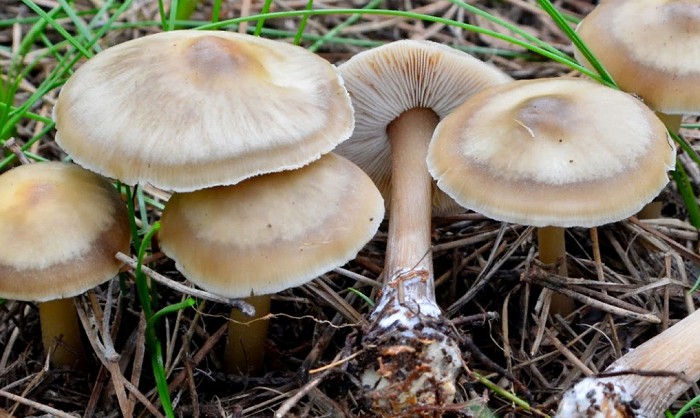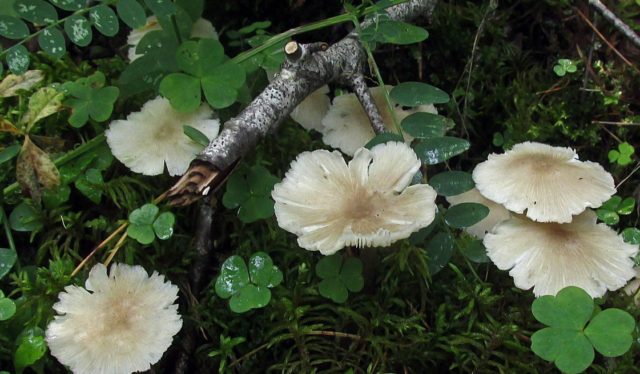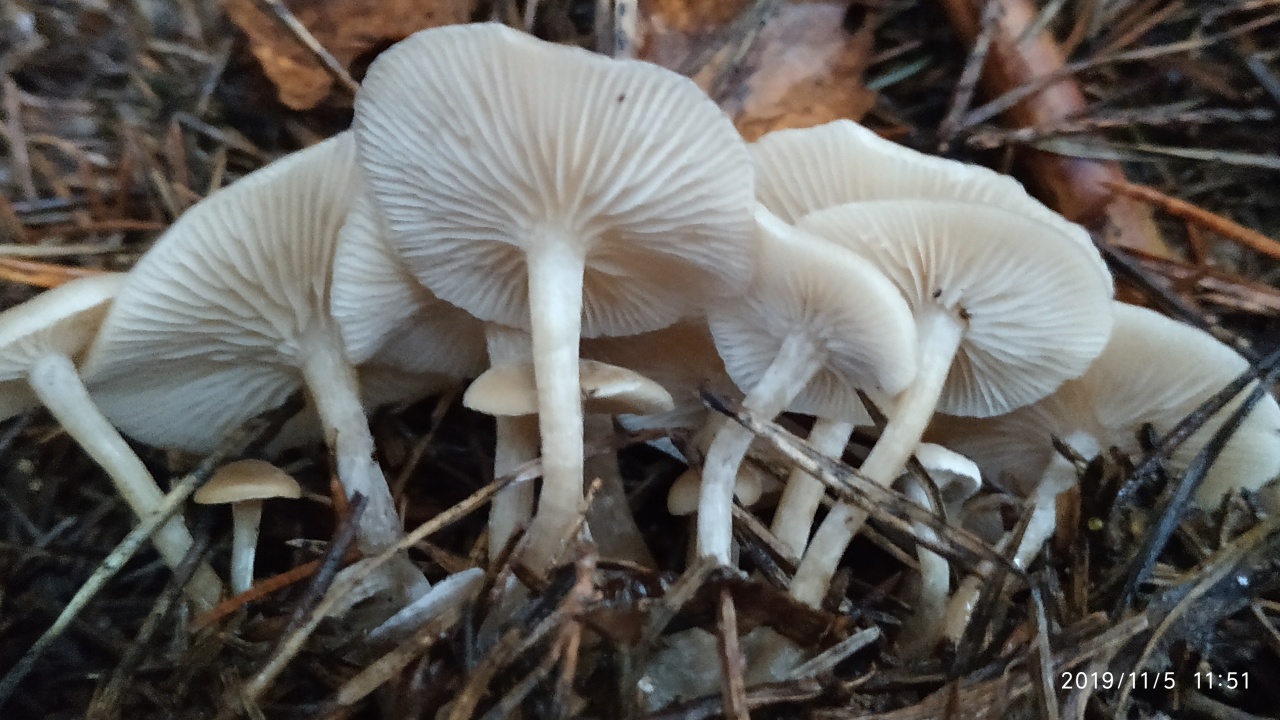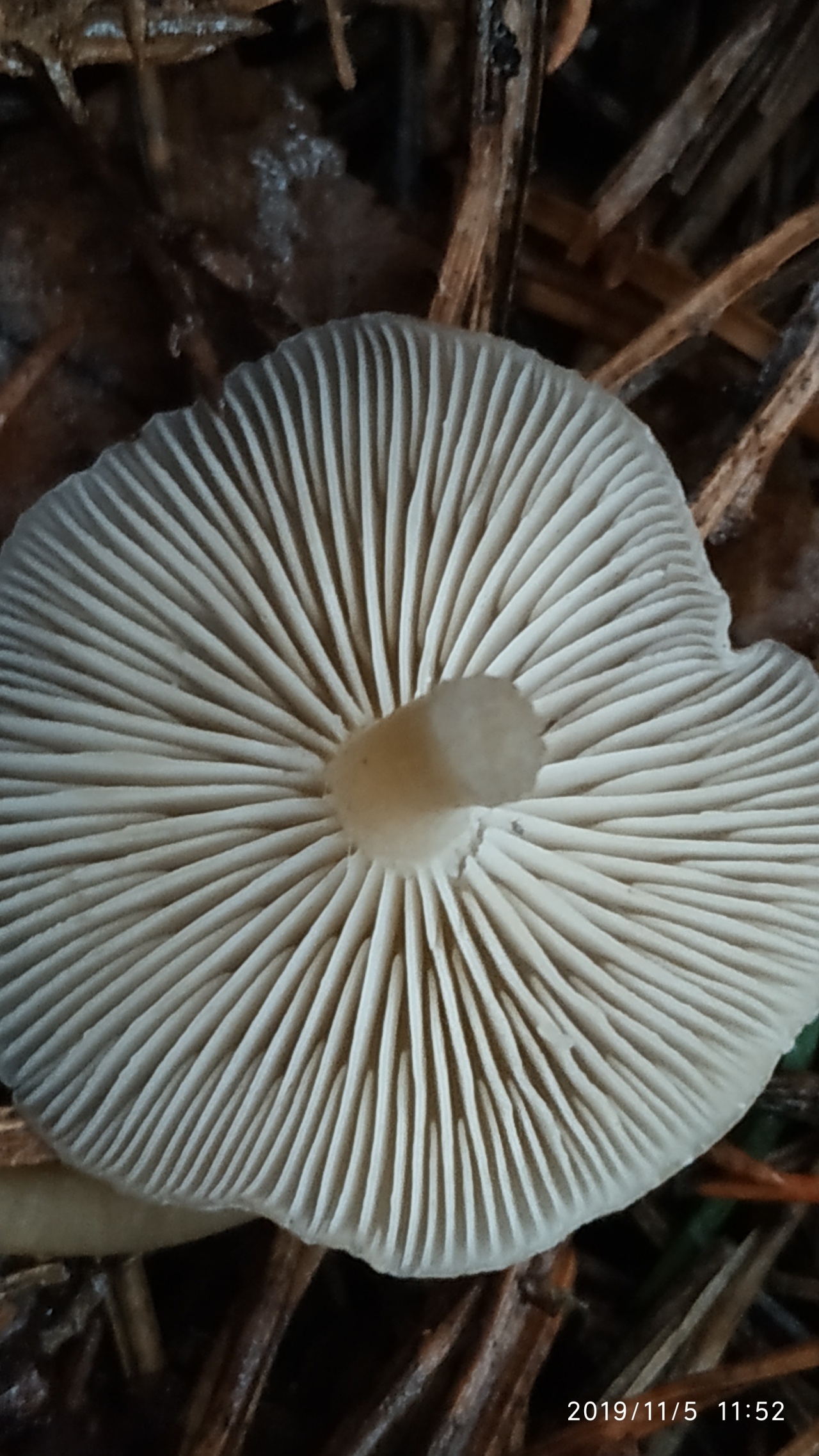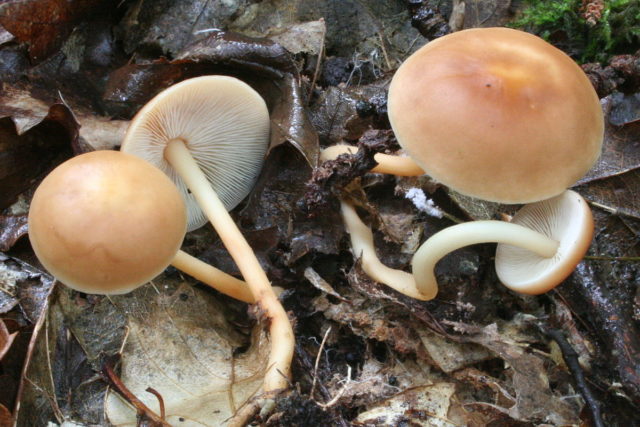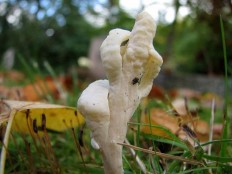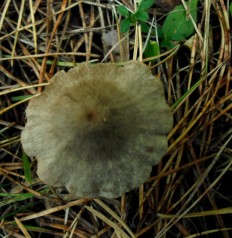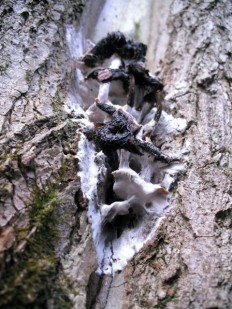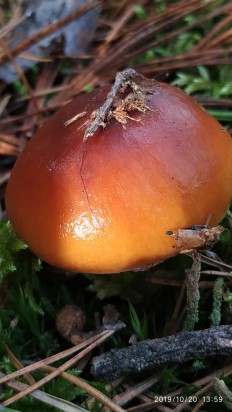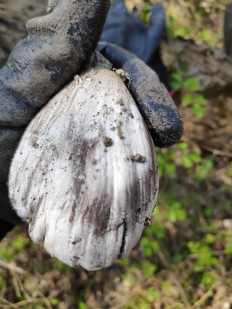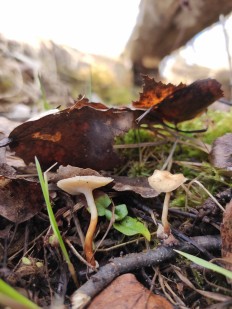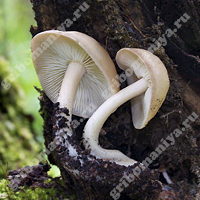Species
- Clitocybula abundans (Peck) Singer 1954
- Clitocybula aperta (Peck) Singer 1962
- Clitocybula azurea Singer 1973
- Clitocybula canariensis Barrasa, Esteve-Rav. & Dähncke 2006 - Canary Islands
- Clitocybula esculenta Nagas. & Redhead 1988 - Japan
- Clitocybula familia (Peck) Singer 1954
- Clitocybula flavoaurantia (Contu) E.F. Malysheva, O. Morozova & Contu 2011 - Italy
- Clitocybula globispora (Raithelh.) Raithelh. 1983
- Clitocybula grisella (G. Stev. & G. M. Taylor) E. Horak 1971
- Clitocybula intermedia (Kauffman) Raithelh. 1979
- Clitocybula lacerata (Scop.) Métrod 1952 - United Kingdom
- Clitocybula lignicola (Lar.N. Vassiljeva) E.F. Malysheva & O. Morozova 2011
- Clitocybula mellea Singer 1954
- Clitocybula oculata (Murrill) H.E.Bigelow 1973
- Clitocybula oculus (Peck) Singer 1962
- Clitocybula omphaliiformis Pegler 1977
- Clitocybula paropsis Raithelh. 1990
- Clitocybula striata Dähncke, Contu & Vizzini 2010
- Clitocybula taniae Vila 2002 - Europe
- Clitocybula tarnensis (Speg.) Singer 1954
- Clitocybula tilieti (Singer) Singer 1962
- Clitocybula wildpretii (Bañares, Beltrán-Tej. & Bon) Esteve-Rav., Barrasa & Bañares 2008
Definitioner
- Basidia (Basidia)
-
Lat. Basidia. A specialized structure of sexual reproduction in fungi, inherent only in Basidiomycetes. Basidia are terminal (end) elements of hyphae of various shapes and sizes, on which spores develop exogenously (outside).
Basidia are diverse in structure and method of attachment to hyphae.
According to the position relative to the axis of the hypha, to which they are attached, three types of basidia are distinguished:
Apical basidia are formed from the terminal cell of the hypha and are located parallel to its axis.
Pleurobasidia are formed from lateral processes and are located perpendicular to the axis of the hypha, which continues to grow and can form new processes with basidia.
Subasidia are formed from a lateral process, turned perpendicular to the axis of the hypha, which, after the formation of one basidium, stops its growth.
Based on morphology:
Holobasidia - unicellular basidia, not divided by septa (see Fig. A, D.).
Phragmobasidia are divided by transverse or vertical septa, usually into four cells (see Fig. B, C).
By type of development:
Heterobasidia consists of two parts - hypobasidia and epibasidia developing from it, with or without partitions (see Fig. C, B) (see Fig. D).
Homobasidia is not divided into hypo- and epibasidia and in all cases is considered holobasidia (Fig. A).
Basidia is the place of karyogamy, meiosis and the formation of basidiospores. Homobasidia, as a rule, is not functionally divided, and meiosis follows karyogamy in it. However, basidia can be divided into probasidia - the site of karyogamy and metabasidia - the site of meiosis. Probasidium is often a dormant spore, for example in rust fungi. In such cases, probazidia grows with metabasidia, in which meiosis occurs and on which basidiospores are formed (see Fig. E).

See Karyogamy, Meiosis, Gifa.
- Pileipellis
-
Lat. Pileipellis, skin - differentiated surface layer of the cap of agaricoid basidiomycetes. The structure of the skin in most cases differs from the inner flesh of the cap and may have a different structure. The structural features of pileipellis are often used as diagnostic features in descriptions of fungi species.
According to their structure, they are divided into four main types: cutis, trichoderma, hymeniderma and epithelium.
See Agaricoid fungi, Basidiomycete, Cutis, Trichoderma, Gimeniderm, Epithelium.
- Pileipellis (Pileipellis)
-
Lat. Pileipellis, skin - differentiated surface layer of the cap of agaricoid basidiomycetes. The structure of the skin in most cases differs from the inner flesh of the cap and may have a different structure. The structural features of pileipellis are often used as diagnostic features in descriptions of fungi species.
According to their structure, they are divided into four main types: cutis, trichoderma, hymeniderma and epithelium.
See Agaricoid fungi, Basidiomycete, Cutis, Trichoderma, Gimeniderm, Epithelium.
- Trichoderma (Trichoderma)
-
The type of cap skin, usually consists of straight, septate elements located more or less perpendicular to the surface and laid both at the same and at different levels; the ends of the hyphae can be morphologically modified and represent dermatocystids. The surface of the cap is velvety to almost felt.
Lat. Trichoderm.
Trichoderma, in turn, is subdivided into intertwined trichoderma and irregular trichoderma.
Intertwined trichoderm (Intricate trichoderm) - trichoderm, consisting of intertwined hyphae, located not parallel to each other and forming a tomentose pubescence.
Irregular trichoderm - Trichoderma, consisting of irregularly branching hyphae.
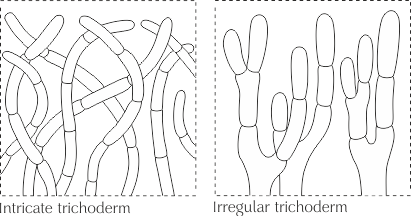
See Dermatotsistida, Hypha, Septa.
- Cutis
-
The type of cap skin, consists of creeping non-gelatinized hyphae located parallel to the surface. The surface of the cap looks smooth.
Lat. Cutis.
See Gifa.
- Amyloid (Amyloid structure)
-
The structure is called amyloid if from Melzer's reagent (solution of 0.5 g of crystalline iodine + 1.5 g of potassium iodide + 20 ml of chloral hydrate + 20 ml of distilled water) turns blue, violet, sometimes almost black.
See Dextrinoid structure.
Collibia oil - Rhodocollybia butyracea
Written by Nikolay Budnik and Elena Meck.
Colibia oily or oily is a late autumn mushroom. It is also called oily money. Why the money - we do not know! Some specimens are found already in August, but the bulk of the mushrooms appear at the end of September. This mushroom does not have a pronounced taste and smell, but it grows massively when there are almost no other mushrooms. So you can safely collect and fry them without prior boiling. We practically do not take this mushroom - there are enough others.
Collibia butterfish most often grows in fairly dry coniferous forests. Mushrooms begin to grow en masse at the end of September and disappear under the snow. Colibia is a small, thin-fleshy mushroom: up to 7-8 cm in diameter.

1. On Ulom Zheleznaya kollibiya oily is a fairly common mushroom.

2. Since it grows right up to the snow, it can be harvested when there are very few other mushrooms.

3. Usually mushrooms do not occur one at a time.

4. They grow up in families, groups.

5. . and this compensates for their small size.

6. Oil colibia can most often be found in a dry pine forest.

7.. among the fallen needles.

8. It also grows under the trees.

9. This is a very small mushroom.

10. Rare specimens reach this size.

11. And most of them are small in size.

12. This is the common size of mushrooms.

13. The hat is smooth, first convex, then extended.

14. It almost always has a tubercle in the center.

15. It can be colored in different ways - brown, chestnut, burgundy-brown, red.

16. The edge of the cap is usually light, even white, and the middle is dark.

17. Plates are frequent and thin.

18. They are always white - this is a characteristic feature of collebration.

19. Only in old age can they darken a little.

20. This is how the plates are attached to the leg.

21. The leg is cartilaginous and stiff.

22. Inside, it is hollow.

23. The leg is long, thin and straight.

24.. but more often the leg expands evenly downward.

25. The color of the leg is much darker than the plates - like a hat.

26. Under the cap, the leg is flattened, not cylindrical.

27. Below it is often covered with a light fluffy coating.

28. The flesh of the mushroom is rather thin, watery.

29. It is white or brownish, with a faint mushroom odor.
References
- Métrod G. (1952). "Les Collybies". Revue de mycologie (in French). 17: 60–93.
- Zhishu B, Zheng G, Taihui L (1993). The Macrofungus Flora of China's Guangdong Province... New York, New York: Columbia University Press. p. 326. ISBN.
- Singer R. (1973). Diagnoses fungorum novorum Agaricalium III. Beihefte zur Sydowia. 7: 1-106 (see p. 18).
- Nagasawa E, Redhead SA (1989). "A new edible agaric from Japan". Reports of the Tottori Mycological Institute. 26: 1–5.
- ^ Malysheva EF, Morozova OV, Contu M (2010). “New combinations in Clitocybula: a study of cystidiate Pseudoomphalina species (Basidiomycota, Agaricomycetes) ". Sydowia. 63 (1): 85–104.
- Raithelhuber J. (1990). Die Gattung Clitocybe ss. lat. in den ABC-Staaten ". Metrodiana (in German). 18 (1–2): 1–77.
- Vila J. (2002). "Una nueva especie de Collybia (Fr .: Fr.) Staude, encontrada en Cataluña." Revista catalana de micologia (in Catalan). 24: 283–286.
Edible mushrooms, berries, herbs
Collybia fusipes
Spindle-footed collibia can be found from the second decade of July to the third decade of September in deciduous forests (most often, where there is an oak or a beech). It prefers to grow near oak (beech) stumps, tree roots, along fallen trunks, around stumps. It grows in rather large groups, united in bundles-aggregates. It is most widespread in the southern regions of our country.
The cap is 3-8 cm in diameter. At first, it is bell-shaped, later it is convex-tuberous with a smooth surface. The color is brownish-brownish or reddish-reddish-brownish with a darker center. In adults, the surface of the cap is most often uneven with cracked edges, while the color becomes lighter. Also, specks of red-brown color may appear on the surface.
The plates are sparse, medium-frequency, weakly accrete, grayish-white with reddish-brown spots.
The leg has a fusiform shape, swollen just below the middle.6-9 cm long, 0.5-1.8 cm in diameter. The structure is longitudinally fibrous, wrinkled-furrowed. In the swollen part it is almost hollow, light at the top, red-brown at the bottom, brown at the very base. Very often, the leg is twisted or twisted longitudinally.
The pulp is white, thin-fleshy, elastic, harsh in the leg, with a subtle smell.
It is considered a weakly poisonous mushroom. However, in some reference books it is equated to edible or conditionally edible. For example, the French mycologist-writer Gerard Oudou in his encyclopedia "Mushrooms" advises to collect the caps of young spindle-footed colibia and use them fresh or pickled.
Photos of Collybia fusipes



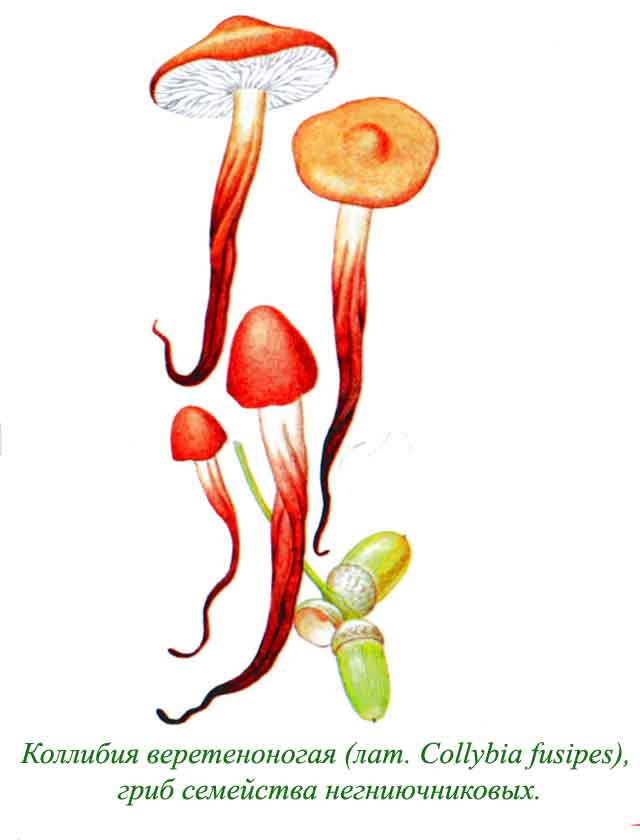
A video about spindle-footed collibia, which allows you to better understand the structure of the fruiting body and imagine how a mushroom grows in the forest.

